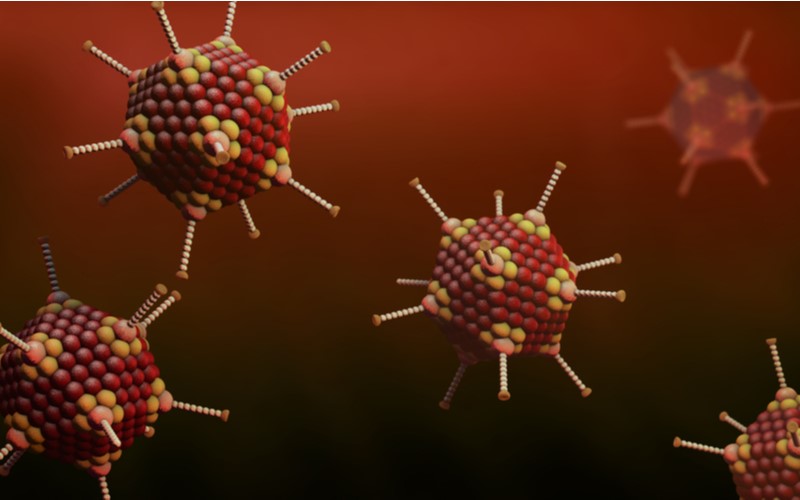The rise of adenoviral Covid-19 vaccines highlights the potential of companies using similar technology in other fields like cancer or gene therapy. However, complex challenges remain, such as circumventing immunity to adenoviral treatments.
Earlier this month, Johnson & Johnson’s candidate became the first single-shot Covid-19 vaccine to get the EMA green light. The vaccine is based on a genetically modified adenovirus, as are others in the market such as the Russian Sputnik V and the AstraZeneca vaccine. Alongside cutting-edge messenger RNA (mRNA) technology, adenovirus-based vaccines are proving one of the dominant technology platforms for vaccinating the world against Covid-19.
Adenoviruses make up a diverse family of DNA viruses that typically cause mild respiratory symptoms in humans such as the common cold. They have been used as delivery vectors for vaccines and gene therapies for decades. These vectors offer numerous advantages to genetic engineers, including that they are easily modified with foreign genes and typically cause mild to no symptoms.
“The unique advantages of adenoviruses that have enabled the rapid development and rollout of these vaccines will only increase in global relevance over the foreseeable future, not just for Covid-19, but other infectious diseases and our internal area of focus, cancer,” said Charlotte Casebourne, the CEO of UK-based biotech Theolytics, a company that specializes in viral therapies against cancer.
Covid-19 vaccines based on mRNA technology, while welcomed by many, have fueled safety concerns and sometimes wild fears. Against that backdrop, adenoviral vaccines have recently come to be seen as a more ‘traditional’ option. However, adenoviral vaccines are not without their own controversies, even as they have so far demonstrated remarkable efficiency in reducing Covid-19 morbidity and mortality.
For instance, AstraZeneca’s vaccine, based on a chimpanzee adenovirus, is experiencing a publicity crisis following a string of setbacks this month. First, safety concerns briefly halted its rollout in several EU countries, and this week, US health officials reprimanded the developer for announcing out-of-date phase III results in a press release. And in the case of Sputnik V, some experts see discrepancies in the clinical data published to support the vaccine.
Even before Covid-19 came on the scene, vaccines and therapies using adenoviral vectors had a stormy history. In a disastrous trial over a decade ago, an adenovirus-based HIV vaccine actually increased some subjects’ susceptibility to HIV. This left many in the scientific community skeptical of adenovirus-based vaccines; some harbor concerns about adenoviruses and HIV susceptibility to this day. And in 1999, the field of gene therapy was almost dealt a death blow when an adenoviral gene therapy triggered lethal inflammation in one patient.
Since then, many companies have been engineering adenoviral vectors to overcome these safety issues. Gene therapy especially has rebounded strongly in recent years and, while many developers use less immunogenic vectors like adeno-associated virus, some continue to harness adenoviruses. Two phase III-stage examples of adenoviral gene therapies include a candidate for bladder cancer by the Ferring-owned company FerGene and Finnish biotech FKD Therapeutics, as well as an ovarian cancer therapy developed by Israeli firm VBL Therapeutics.

One drawback of using adenoviruses as a vector is that some types are a common pathogen in humans, so many people have pre-existing immunity to them. This can result in vaccines and treatments becoming less effective in those people who have naturally developed immunity against adenoviruses. This is particularly the case with the most commonly used adenoviral vector, a human adenovirus called serotype 5, or Ad5.
Casebourne and other experts say there are ways to go around the issue of pre-existing immunity to virus vectors, not least because the adenovirus family is huge and companies can select rarer vectors.
“Less than 1% of the therapeutic potential of this virus class has been explored to date; this is our focus with Theolytics,” Casebourne added. “Our proprietary libraries of novel adenovirus serotypes represent millions of novel variants, and we are in discussion with potential partners to enable us to support the development of this next generation of products.”
In some cases, the ability of the vector to generate an immune response may even be beneficial, said Dror Harats, CEO of the gene therapy firm VBL Therapeutics.
“In the case of cancer, the immunogenicity of the vector is a great advantage,” Harats told me. “It can induce an immune adjuvant effect in the tumor setting, and help recruit the immune system into the tumor, as we have seen in biopsies of ovarian cancer patients treated with systemic IV administration of [our candidate].”
As adenoviral Covid-19 vaccines are being rolled out across entire populations, could this vastly increase pre-existing immunity against adenoviral vectors used in gene therapies, vaccines, and other adenovirus-based therapies?
Not necessarily. According to Chris Ullman, Founding Analyst at the UK VC firm Deep Science Ventures, the major adenovirus-based Covid-19 vaccines on the market use vectors that relatively few people have been exposed to. For instance, the AstraZeneca vaccine uses a chimpanzee adenovirus rather than a human one. Johnson & Johnson’s candidate uses an uncommon type of human adenovirus called Ad26.
The picture is more complex for Covid-19 vaccines that employ the common Ad5 vector, such as Sputnik V — which uses both Ad5 and Ad26 — and an adenoviral vaccine marketed by CanSino Biologics in China. Sputnik V doses are delivered directly into the muscle rather than into the blood, which might help avoid some of the immune reaction, Ullman speculated. Additionally, he pointed out that these vaccines likely “can’t make Ad5-based products encounter any more immunogenicity in the population than they probably already are.”
In the case of VBL’s Ad5-based gene therapies, the company is confident that the virus is able to deliver its genetic cargo and fulfill its entire role before the immune system has had a chance to really respond. “Once the virus has entered the cells and delivered its cargo — transgene DNA — into the cells, it’s protected from circulating [antibodies],” Harats added.
Nevertheless, some biotechs may need to put special effort into avoiding immunity issues, especially those that combine different human adenovirus groups using genetic engineering. If the resulting hybrid viral vector resembles too much those used in Covid-19 vaccines, suggested Ullman, “then they could potentially be affected by newly acquired neutralizing antibodies in the wider population. But I am sure they have already considered this and are ensuring this is not the case.”
Cover image from Elena Resko. Body text image from Shutterstock.





